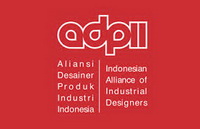Perancangan lemari aksesoris otomotif pada garasi rumah dengan sistem modular
Abstract
This study aims to design an efficient and functional automotive accessory cabinet using a modular system for a home garage with limited space. Along with the growth of the global furnitur industry and the need for efficient storage space, a modular system is chosen because of its flexibility in adjusting the size of the space. This cabinet is designed to be easily disassembled according to user needs, maximizing garage space efficiency without reducing aesthetics. This study uses a qualitative method with a Design Thinking approach, involving five stages: empathize, define, ideate, prototype, and test. Teak wood is chosen as the main material because of its durability and aesthetic value. The modular design not only meets the needs of storing automotive accessories, but also supports the principle of sustainability through the use of durable and environmentally friendly materials. The results show that this modular design is effective in optimizing limited space, providing a flexible and aesthetic solution for storage in a home garage. The modular system ensures that the cabinet can be customized and used in various configurations, allowing users to optimize limited garage space. The modular system has advantages over conventional designs in optimizing limited space. Unlike traditional cabinets that have a fixed structure, the modular system allows adjustments and rearrangements as needed, making it more flexible, efficient, and can maximize every inch of space.
Keywords
Full Text:
PDFReferences
Andrianto, A. (2022). Perancangan Rak Sepatu Dengan Sistem Modular Untuk Menunjang Fasilitas Penyimpanan Di Ruang Terbatas. Waca Cipta Ruang, 8(1), 1-5. DOI: https://doi.org/10.34010/wcr.v8i1.6487.
Anindita, M., & Riyanti, M. T. (2016). Tren flat design dalam desain komunikasi visual. Jurnal Dimensi DKV: Seni Rupa dan Desain, 1(1), 1-14. DOI: https://doi.org /10.25105/jdd.v1i1.1816
Armia, A. (2021). Perencanaan Redesain Pasar Tradisional Lambaro Banda Aceh Dengan Tema Arsitektur Modern. Journal of Engineering Science, 7(2). 1-16.
Astuti, A. D. (2023). Kajian Ragam Material Rotan Dengan Sistem Modular Pada Interior Bangunan Residensial. Waca Cipta Ruang, 9(2), 138-143. DOI: https://doi.org/10.34010/wcr.v9i2.9479
Darmalaksana, W. (2020). Metode Design Thinking Hadis: Pembelajaran, Riset & Partisipasi Masyarakat. Fakultas Ushuluddin UIN Sunan Gunung Djati Bandung
Hollis, K., & Rees, D. (2023). The Rise of Modular Furnitur in the Digital Age: Trends and Innovations. Journal of Modern Design Studies 17(2):35–52.
Ilhan, A. E., & Togay, A. (2024). Use of eye-tracking technology for appreciation-based information in design decisions related to product details: Furniture example. Multimedia Tools and Applications, 83(3), 8013-8042. DOI: https://doi.org/10.1007/s11042-023-15947-0
Jayadi, N., & Prasetya, R. D. (2018). Penguatan Eksistensi Kota Kreatif Melalui Inovasi Desain Kamuflase Menara BTS Berbasis Zonasi Wilayah. PRODUCTUM Jurnal Desain Produk 3(3):101–106. DOI: https://doi.org/10.24821/productum.v3i3.1923
Lawson, S. (2024). Furniture Design: An Introduction to Development, Materials and Manufacturing. Laurence King Publishing.
Manavis, A., Minaoglou, P., Efkolidis, N., & Kyratsis, P. (2024). Digital Customization for Product Design and Manufacturing: A Case Study within the Furniture Industry. Electronics, 13(13), 2483. DOI: https://doi.org/10.3390/electronics13132483
Mubarrok, U. S., & SS, S. (2018). Penerapan SWOT Balanced Scorecard pada perencanaan strategi bisnis. Jakad Media Publishing.
Piantara, I. G. N. (2021, February). Adaptasi Desainer Di Era Perkembangan Aplikasi Instan Desain. In SANDI: Seminar Nasional Desain (Vol. 1, pp. 90-97).
Setyoningrum, Y., Prawirodihardjo, Y. R., & Suhanjoyo, S. N. (2022). Faktor Manusia dalam Desain Interior. Ideas Publishing.
Smardzewski, J. (2024). Furnitur Design. Springer
Sugiyono. (2019). Metode Penelitian Kuantitatif, Kualitatif, Dan R&D. Bandung: Alfabeta
Utomo, G. S. W. P. (2022, July). Integrasi Kriteria Ergonomi dan Inklusi dalam Desain Modular Hunian Tanggap Darurat Kebencanaan. In SMART: Seminar on Architecture Research and Technology (Vol. 6, No. 1, pp. 87-94). DOI: https://doi.org/10.21460/smart.v6i1.185
Yosianita, A. (2022). Perancangan Storage Modular Berbahan Dasar Sampah Plastik. Ars: Jurnal Seni Rupa dan Desain, 25(2), 115-128. DOI: https://doi.org/10.24821/ars.v25i2.4756.
Yulius, Y., Halim, B., & Saluza, I. (2023). Pelatihan Perancangan Komunikasi Visual Pada Media Sosial Resmi Organisasi Di Balai Pengelola Transportasi Darat Wilayah VII Provinsi Sumatera Selatan Dan Bangka Belitung. Lumbung Inovasi: Jurnal Pengabdian kepada Masyarakat, 8(2), 197-208. DOI: https://doi.org/10.36312/linov.v8i2.1204
DOI: https://doi.org/10.24821/productum.v7i2.13893
Refbacks
- There are currently no refbacks.
p-ISSN 2477-7900 | e-ISSN 2579-7328

This work is licensed under a Creative Commons Attribution 4.0 International License.
Like & Follow Us










